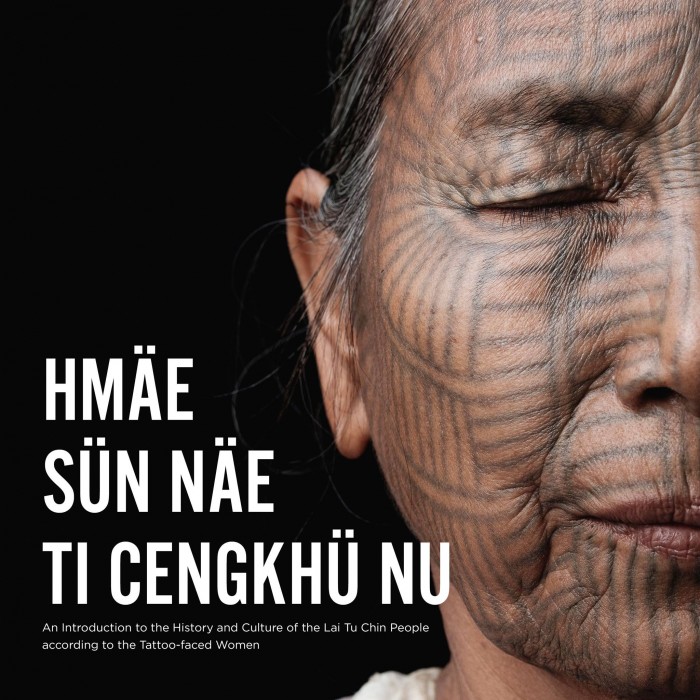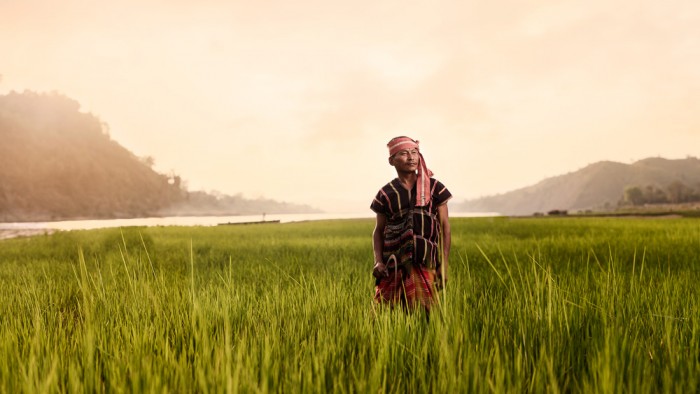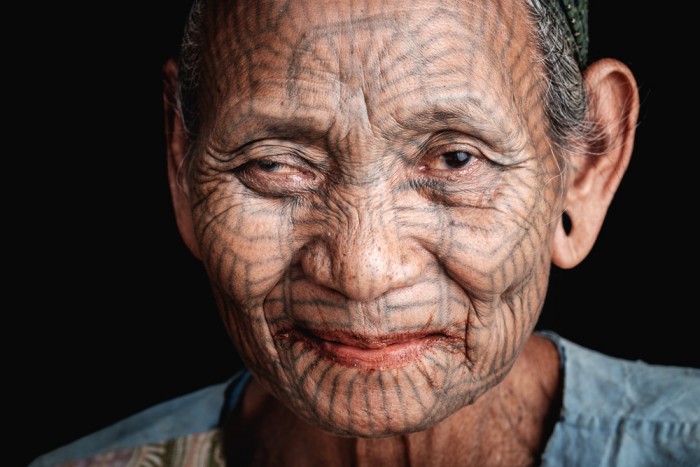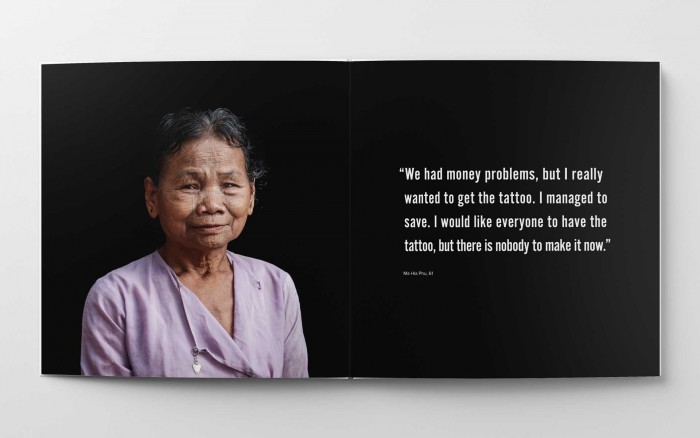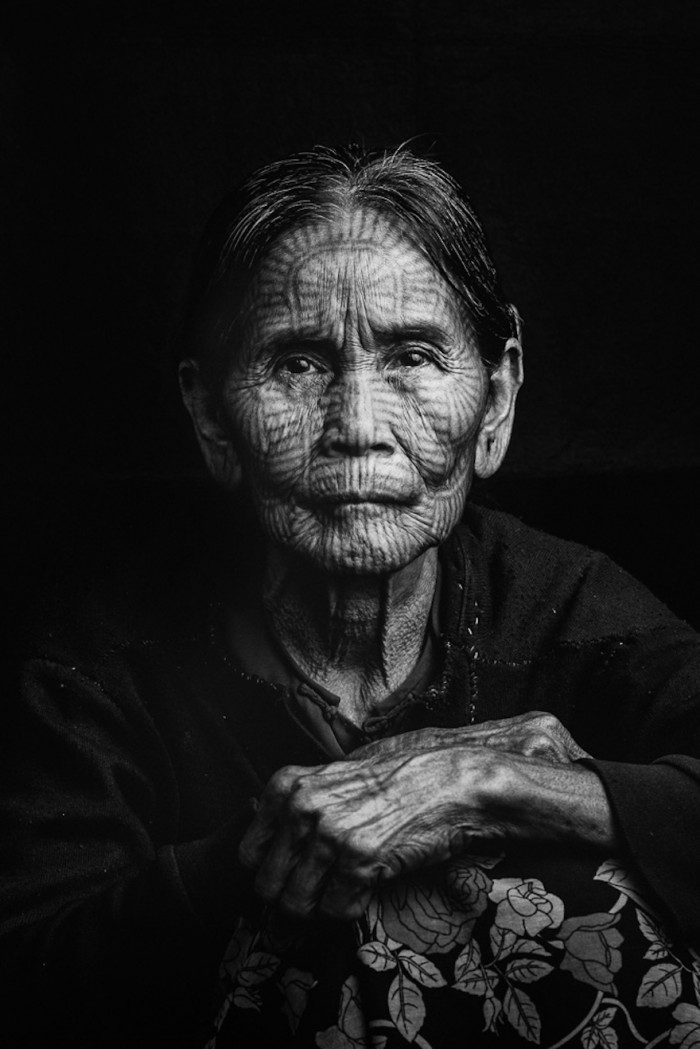A not yet released photo book titled Hmäe Sün Näe Ti Cengkhü Nu claims to be the first and only documentation of the Lai Tu Chin culture and its tattoo-faced women in the southeast Asian nation of Myanmar. According to photographer Dylan Goldby, the book preserves what is left of their disappearing culture.
Oppressive military rule from 1962 to 2011 has made the life for Myanmar’s many minorities unbearable. The Lai Tu Chin people are one such minority. Although very little information on the group can be found, Goldby says much of the Lai Tu Chin culture was lost or made illegal. Many of their cultural artefacts were either sold off or stolen, and traditions like the tattooing of faces is no longer practised.
The book uses portraiture and the recreation of scenes to document the still living generations who received the tattoos.
“Lai Tu Chin women had their faces tattooed in the past as a coming-of-age mark, and a sign that they belonged to the tribe,” writes Goldby. “The book records these ladies experiences, memories and current opinions on the now extinct practise.”
Goldby met and photographed 100 women, and spoke with village elders about their culture and history. “What was initially intended to be a photo book quickly begged to be something more; something that would do justice to the kindness and openness of these people,” explains Goldby.
“My interviews got deeper, and I gradually began to piece together the things they were sharing about their history. With no written history and a government that favours the assimilation of smaller tribes, the Lai Tu Chin people have no real document of who they actually are. This book hopes to be a small window into that history.”
The book was completed with the help of Pablo Fuentes Gómez, and Wesley Chang. Along with Goldby, the three make up a Seoul-based design, photography, and videography team.
The group launched a Kickstarter campaign to aid in the manufacture and distribution of the book. The proceeds from its sale will go towards providing clean drinking water and education for the Lai Tu Chin people in Rakhine State.
The book features over 100 pages of photographs and is available as a softcover and a limited edition hardcover. Limited edition prints are also available, and an exhibition of the works was launched in Seoul on 20 June.

